#saeed jaffrey
Text
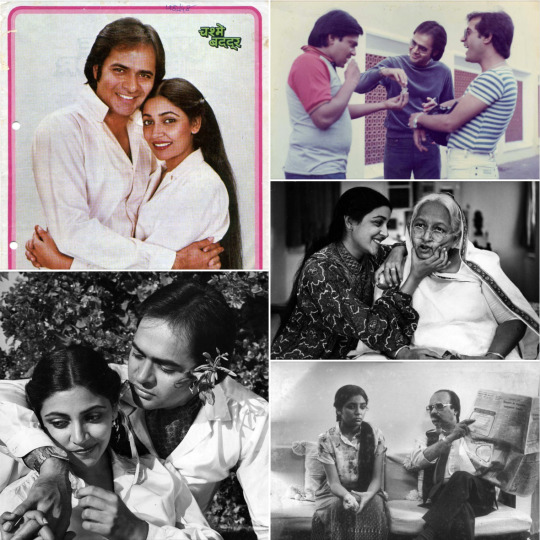
Celebrating 43 years of #ChashmeBuddoor (08/05/1981), a classic romantic comedy about friendship and love, starring Farooq Shaikh, Deepti Naval, Rakesh Bedi, Ravi Baswani, and Saeed Jaffrey. Directed by Sai Paranjpye and produced by Gul Anand and Jayshree Anand — Makhija, this film captures the essence of youth and camaraderie.
The story revolves around three Delhi University students—Siddharth, Omi, and Jai—who stay in the city during their summer vacation. Their routine life takes a turn with the arrival of Neha, a charming young woman.
After directing the poignant drama "Sparsh," Sai Paranjpye switched gears dramatically to craft "Chashme Buddoor," a lighthearted comedy that explores male friendship with witty and sharp insights, avoiding clichéd slapstick humor.
The film shines with its realistic dialogue and natural interactions, especially in scenes like when Siddharth, trying to play it cool, offers Neha a ride, only to admit he'd been waiting for her. Neha, far from a typical damsel, reveals she hoped he would appear. This genuine exchange underscores their mutual attraction and understanding.
Another memorable moment is when Neha demonstrates a detergent’s effectiveness by washing a towel, which Siddharth sheepishly admits was already clean. The simplicity and honesty of their interactions make "Chashme Buddoor" feel as refreshing as a sudden rain shower.
The film also features a delightful proposal scene where Siddharth's nervousness meets Neha's playful challenge, showing the depth of their bond and the light-hearted nature of their relationship.
"Chashme Buddoor" remains a beloved example of how humor and heart can create a timeless story about the joys and surprises of everyday life.
9 notes
·
View notes
Text
The epic biopic ‘Gandhi’ starring Ben Kingsley had its US premiere this week 40 years ago. 🚃🕊✌️
“𝙰𝚗 𝚎𝚢𝚎 𝚏𝚘𝚛 𝚊𝚗 𝚎𝚢𝚎 𝚘𝚗𝚕𝚢 𝚎𝚗𝚍𝚜 𝚞𝚙 𝚖𝚊𝚔𝚒𝚗𝚐 𝚝𝚑𝚎 𝚠𝚑𝚘𝚕𝚎 𝚠𝚘𝚛𝚕𝚍 𝚋𝚕𝚒𝚗𝚍.”
#otd#movies#drama#biopic#1982#gandhi#mahatma gandhi#Ben Kingsley#candice bergen#Martin sheen#richard attenborough#india#peace#john gielgud#roshan seth#edward fox#Trevor Howard#john mills#saeed jaffrey#SoundCloud
2 notes
·
View notes
Text
The Wilby Conspiracy (1975)
#video#the wilby conspiracy#1975#sidney poitier#saeed jaffrey#70s movies#1970s film#ralph nelson#movie scenes
0 notes
Text

Currently Watching - 30 Days of The Gays™ Edition
MY BEAUTIFUL LAUNDRETTE
Stephen Frears
UK, 1985
#30 Days of The Gays™#Daniel Day-Lewis#Gordon Warnecke#queer films#Roshan Seth#Saeed Jaffrey#Stephen Frears#watching
1 note
·
View note
Text
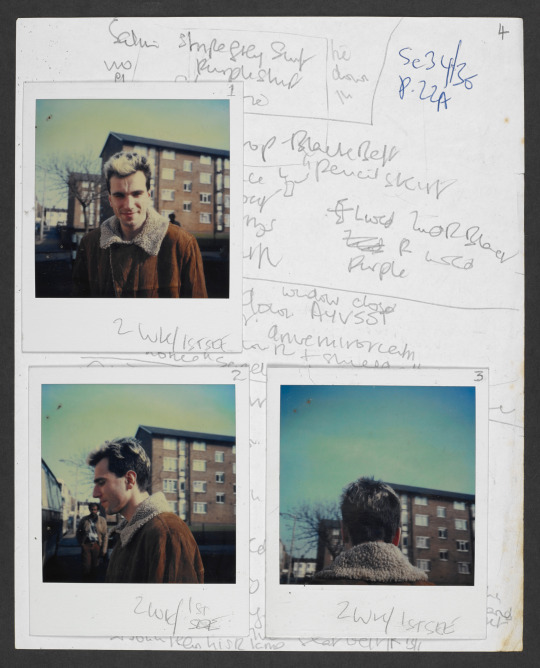








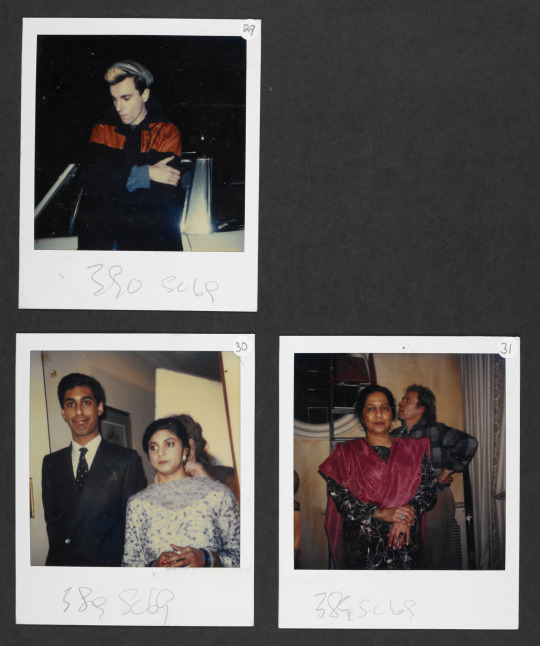
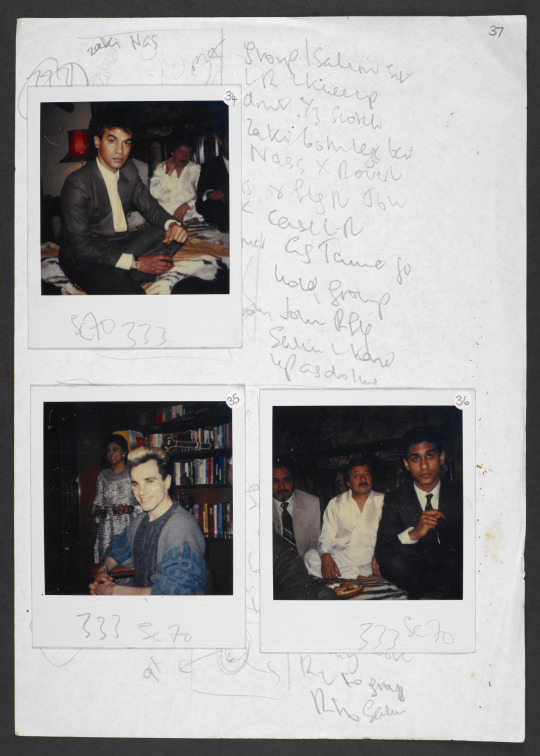

My Beautiful Laundrette: Continuity, costume notes, polaroids
These extensive costume and continuity notes were produced during the filming of My Beautiful Laundrette, a 1985 film written by Hanif Kureishi and directed by Stephen Frears.
Originally devised for television, Kureishi’s first screenplay was shot on a low budget in only six weeks. Set in Thatcher-era south London, the film is a ground-breaking exploration of race, class, politics and sexuality. It centres on Omar, a young British-Pakistani man who is given the opportunity to renovate his uncle’s laundrette, and Johnny, his boyhood friend who has fascist sympathies and who becomes Omar’s lover. The romantic relationship between these young men develops alongside the film’s other concerns ─ such as the British Asian struggle to maintain ethnic identity while assimilating into Western society, represented by Papa Hussain, an alcoholic, disillusioned socialist, and Uncle Nasser, a rich entrepreneur.
The film stars Saeed Jaffrey (Nasser), Roshan Seth (Papa Hussain), Daniel Day Lewis (Johnny) and Gordon Warnecke (Omar). My Beautiful Laundrette became a huge commercial and critical success after it was applauded by film critics at the Edinburgh Film Festival, leading to international distribution for cinema in 1986 and an Oscar nomination for Kureishi.
What are continuity notes?
When shooting a film, continuity notes are logged for every take to ensure continuity between screen direction, action, costume, props, and so on. Photographs, like the Polaroids shown here, support the work. Written in a messy hand, these notes convey the sense of an animated atmosphere on set.
For a film that is so concerned with identity and boundaries between characters, the continuity notes emphasise the role of costume as a signifier of status. Note the flash suit and aviator sunglasses worn by nouveau riche drug trafficker Salim, and the transformation of Omar from an unemployed lad in jeans and sweatshirt to the cleaned-up, suited businessman who is increasingly swayed by Thatcherite economic competiveness.
© Hanif Kureishi (Screenwriter), Penny Eyles (Script supervisor)
Held by the British Library (1) (2) (3)
Individual pieces in the link
#my beautiful laundrette#queer film#1980s#daniel day lewis#gordon warnecke#stephen frears#hanif kureishi#british library#bts
538 notes
·
View notes
Text









Common As Muck - BBC One - September 7, 1994 - January 12, 1997
Comedy / Drama (12 Epispodes)
Running Time: 60 minutes
Stars:
Edward Woodward as Nev Smith
Neil Dudgeon as Ken Andrews
Richard Ridings as Bernard Green
Tim Healy as Foxy
Stephen Lord as Jonno Fox
Roy Hudd as John Parry
June Whitfield as Irene Watson
Kathy Burke as Sharon
Terence Rigby as Dougie Houd
Saeed Jaffrey as Nat Prabhakar
Lesley Sharp as Christine Stranks
Freda Dowie as Dulcie Green
George Raistrick as Mister Arnold
Paul Shane as Mike Roberts
Tony Melody as Nev's Friend
William Ivory as Vinny
Simon Ashley as Stan
Anthony Barclay as Sunil Prabhakar
Michelle Holmes as Marie
Nimmy March as Denice Andrews
#Common As Muck#TV#BBC One#1990's#Comedy#Drama#Edward Woodward#Neil Dudgeon#Richard Ridings#Tim Healy#Stephen Lord#Roy Hudd#Nimmy March
2 notes
·
View notes
Text
The Man who would be King

The Man who would be King is a 1975 adventure film directed by John Huston. It’s a very old-fashioned Victorian era colonialist adventure film. It’s based on a story by Rudyard Kipling, who in fact appears in the film as a character, as part of the story’s framing narrative, played by Christopher Plummer.
The film is now almost 50 years old, and probably must have seen old-fashioned even in 1975.Already then it was a period drama, based on a story dating all the way back to 1888. And In fact, John Huston was an old Hollywood veteran at that point, who had been trying to get it made for over 20 years, and originally considered Humphrey Bogart and Clark Gable for the lead roles of Danny Dravot and Peachy Carnahan. Several male duos of stars were considered for the leads while Huston tried to make the film, Burt Lancaster and Kirk Douglas, Richard Burton and Peter O’Toole and Robert Redford and Paul Newman. Eventually Sean Connery and Michael Caine actually got the parts in the final film and it was a good decision. It’s very much a film about British colonialism, American Hollywood actors would have been miscast (although Burton and O’Toole might have worked).
And it is a film that boils down the adventure story to its colonialist roots. Two white british men go off on an adventure trying to become kings of a distant land.
The land in question is Kafiristan, which was practically a white spot on the map for Europeans when Kipling wrote the story. It has a fascinating history. The native people followed an ancient version of Hinduism, and were thus called kafirs (non-believers) by neighbouring Muslims. The Amir of Afghanistan conquered the region around 1895, and forcibly converted the natives to Islam, and the region is now known as Nuristan.
It’s the depiction of Kafiristan and non-white people in general where the film has aged the most. Kipling knew like most white men at the time little about the region, and in the film the native religion is presented as an exotic, primitive and mysterious superstition that bears little resemble even to modern hinduism. And overall the natives are presented as violent, superstitious and easily manipulated. The non-white characters are stereotypes. It’s a racist film.
Yet the film’s depiction of imperialism is far from unironically positive. There is a kind of irony to it that speaks perhaps to colonial anxieties on the part of Kipling. Carnehan and Dravot have zero noble intentions of “civilizing the natives” when setting out on their adventure, they are in it to get rich. It’s all for “fortune and glory” as Indiana Jones would put in the film Temple of Doom (itself a movie very much inspired by Kipling’s Indian adventure stories).And the pair are in fact small-time criminals and conmen who go on this adventure because they are kicked out of India. The whole adventure is just another con, this time a big one played out on the natives of Kafiristan. They promise their leadership will benefit the natives and all they want is to take the land’s wealth and leave.
And any success Dravot and Carnehan have in their big con is because of dumb luck, not any superiority of theirs. They never even learn the natives language, and are reliant on the Indian ex-Gurkha soldier Billy Fish (played charismatically if stereotypically by Indian actor Saeed Jaffrey) to translate for them. Dravot becomes a God because he is hit by an arrow in a lucky way while doing something stupid. And then the story becomes a morality tale about the corrupting danger of hubris and greed as Danny Dravot lets the god-king thing go to his head. The themes harken back to Huston’s earlier adventure film The Treasure of the Sierra Madre.Eventually Dravot overplays his hand and it all falls apart. The native woman Danny forces to marry him, bites him and reveals that he can bleed after all. The collapse of their con-game comes with disastrous consequences for Dravot and Carnehan. The fortune and glory they were after are revealed to be meaningless and a source of corruption. The film tellingly ends with Kipling looking in horror at Dravot’s crowned but severed head.
It’s a story about white colonialism, but it’s one where the attempt is fueled by greed and the attempt at colonization fails. It is this ambiguity about colonialism that probably made the story viable to be filmed as late as 1975.
And it’s still compelling today, and a good film. Well, it depends if you are able to look past the racism. John Huston’s directing gives the film an epic sweep and some compelling visuals, and the script is an excellent adaptation of the short story. Sean Connery and Michael Caine have excellent chemistry, and brings life to their character’s arcs. The moral complexity of the adventure and the arc the main characters have that raise the film above the simple colonialist adventure story.
14 notes
·
View notes
Photo

My Beautiful Laundrette (Stephen Frears, 1985)
Cast: Gordon Warnecke, Daniel Day-Lewis, Roshan Seth, Saeed Jaffrey, Shirley Anne Field, Rita Wolf, Derrick Branche. Screenplay: Hanif Kureishi. Cinematography: Oliver Stapleton. Production design: Hugo Luczyc-Wyhowski. Film editing: Mick Audsley. Music: Stanley Myers, Hans Zimmer.
A fusillade across the bow of Thatcherite Britain, My Beautiful Laundrette manages to take on racism, homophobia, and capitalist entrepreneurship all in one breathtaking moment. It also served as a breakthrough film for Daniel Day-Lewis as Johnny, a gay skinhead with an Anglo-Pakistani lover, Omar (Gordon Warnecke).
3 notes
·
View notes
Text
Cine: My Beautiful Laundrette (1985)









Una de las primeras recomendaciones que le hace su padre (Roshan Seth) es que intente evitar a Nasser (Saeed Jaffrey), su propio hermano, y que se dedique a optar por un futuro universitario. Sabe de lo que habla: además de andar en negocios de moralidad cuestionable, engaña a su esposa con Rachel (Shirley Ann Field). Sin embargo, Omar (Gorden Warnecke), cegado por la buena vida que su tío se da, cede a su invitación laboral: ser gerente de una lavandería en estado calamitoso.
Omar, proveniente de una familia pakistaní afincada en Londres, toma dos decisiones fundamentales: utilizar el dinero que un emisario de su tío le da, producto del narcotráfico, para remodelar el lugar y contratar a Johnny (el dos veces ganador del Oscar Daniel Day-Lewis), su amigo de la infancia, ahora punk, para que lo ayude en la empresa. Todo esto sucede mientras sus parientes le buscan una esposa, su padre se niega a visitar la lavandería, la banda racista de Johnny expresaba su rechazo hacia los "pakis" (forma despectiva de trato hacia los paquistaníes) y ambos forman una relación pasional.
Un poco de comedia, otro de drama, algo de romance y mucho de denuncia social es lo que tenemos en "My Beatitiful Laundrette" ("Mi hermosa lavandería", según el exacto título local de España; "Ropa limpia, negocios sucios", de acuerdo a su exquisita versión argentina). Película esencial en la filmografía de Stephen Frears ("La reina", "The Queen", 2006), ha recibido una nominación al Oscar por el guión de Hanif Kureishi, quién se basó en sus propias experiencias a la hora de escribir sobre la discriminación que sufrió en la escuela debido a su origen paquistaní.
youtube
#cine#MyBeautifulLaundrette#1985#ReinoUnido#gay#adolescencia#StephenFrears#RoshanSeth#SaeedJaffrey#ShirleyAnnField#DanielDay-Lewis#MiHermosaLavandería#RopaLimpiaNegociosSucios#HanifKureishi
1 note
·
View note
Text
Kiara Advani Biography
Kiara Advani, a name synonymous with grace and talent, has become a force to be reckoned with in the Indian film industry. But her journey to the top wasn't without its share of twists and turns. Let's delve into the captivating story of this Bollywood beauty, exploring her family background, educational pursuits, and the remarkable milestones that have shaped her career.

A Family Steeped in Legacy
Born Alia Advani in 1992 [Wikipedia: Kiara Advani], Kiara comes from a family with a rich tapestry of heritage. Her father, Jagdeep Advani, is a Sindhi Hindu businessman, while her mother, Genevieve Jaffrey, is a teacher with a fascinating lineage. Kiara's maternal grandfather hailed from Lucknow, and her maternal grandmother boasted Scottish, Irish, Portuguese, and Spanish ancestry. This unique blend of cultures is perhaps what contributes to Kiara's captivating screen presence.
Interestingly, the world of cinema wasn't entirely foreign to Kiara. Actors Ashok Kumar and Saeed Jaffrey are her step-great-grandfather and great-uncle, respectively. It seems creativity runs deep in her blood!
Education and Early Steps
Kiara received her education at the prestigious Cathedral and John Connon School in Mumbai. Later, she graduated with a Bachelor of Arts degree in Mass Communication from Jai Hind College. While academics were important, Kiara's heart yearned for the world of entertainment. Her first brush with the camera came as a toddler, featuring in a Wipro baby commercial alongside her mother, who was a model at the time. This early exposure might have sparked a lifelong passion for performing.
A Glittering Debut and Rise to Prominence
Kiara's official Bollywood debut came in 2014 with the film "Fugly." Though the movie wasn't a box office success, it marked the beginning of her journey. The turning point arrived in 2016 with the biographical sports drama "M.S. Dhoni: The Untold Story." Kiara's portrayal of M.S. Dhoni's wife, Sakshi Singh, garnered her critical acclaim and recognition. This propelled her into the spotlight, paving the way for a string of successful projects.
Milestones and Achievements
Since then, Kiara has delivered captivating performances in a diverse range of films. From the Telugu political drama "Bharat Ane Nenu" to the unconventional anthology "Lust Stories," she has showcased her versatility and ability to adapt to any role. Her portrayal of Preeti in the commercially successful "Kabir Singh" and the effervescent Monika in the comedy "Good Newwz" further solidified her position as a leading actress.
Kiara's talent has been acknowledged by the industry as well. She has been the recipient of several accolades, including the Zee Cine Award for Best Actress - Viewers Choice.
Personal Life and Beyond the Spotlight
While Kiara is known for her on-screen persona, she maintains a relatively private life off-camera. As of May 2024, there have been reports of her marriage to actor Sidharth Malhotra, but the couple has yet to officially confirm the news.
Interesting Facts
Kiara wasn't always Kiara! She adopted her stage name before her debut upon Salman Khan's suggestion, as another actress, Alia Bhatt, was already a prominent figure in the industry.
Kiara's talent extends beyond acting. Her brother, Mishaal, is a musician, and it seems the artistic streak runs strong in the family.
A Bright Future Awaits
With her dedication, talent, and undeniable charm, Kiara Advani is undoubtedly a force to be reckoned with in Bollywood. As she continues to captivate audiences with her diverse portrayals, one thing is certain - Kiara's journey to the top is far from over. We can't wait to see what exciting projects this phenomenal actress takes on next!
0 notes
Text
Omar, a young Brit from a Pakistani family, and his boyfriend Johnny, a former skinhead, attempt to open the nicest laundromat in London while tackling issues of family, race, class, sex, crime, and Thatcher-era austerity.
Starring Saeed Jaffrey, Roshan Seth, Daniel Day-Lewis, Gordon Warnecke, and Shirley Anne Field. Written by Hanif Kureishi and directed by Stephen Frears
Episode 132 - My Beautiful Launderette
https://sites.libsyn.com/398906/episode-132-my-beautiful-launderette-1985




1 note
·
View note
Text

Siddharth Parashar and Lallan Miyan. #ChashmeBuddoor #FarooqShaikh #SaeedJaffrey
2 notes
·
View notes
Text


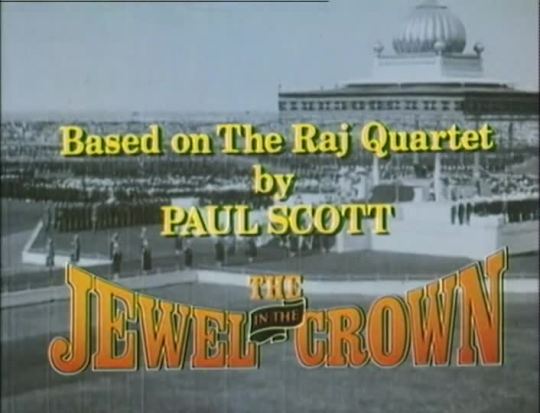


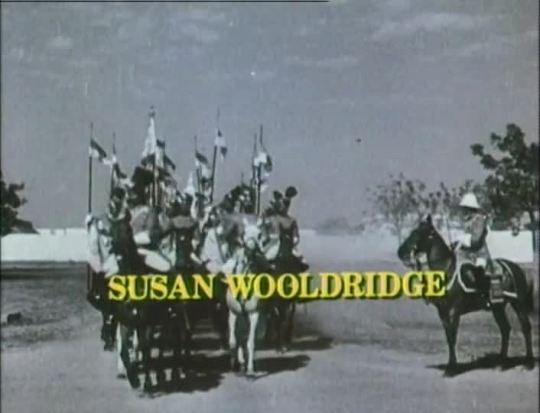

The Jewel in the Crown - ITV - January 9, 1984 - April 3, 1984
Period Drama (14 episodes)
Running Time: 60 minutes
Stars:
Peggy Ashcroft as Barbara Batchelor
Janet Henfrey as Edwina Crane
Derrick Branche as Ahmed Kasim
Charles Dance as Sgt Guy Perron
Geraldine James as Sarah Layton
Rachel Kempson as Lady Manners
Art Malik as Hari Kumar
Wendy Morgan as Susan Layton
Judy Parfitt as Mildred Layton
Tim Pigott-Smith as Supt./Capt/Maj/Lt Col Ronald Merrick
Eric Porter as Count Dmitri Bronowsky
Susan Wooldridge as Daphne Manners
Ralph Arliss as Capt. Samuels
Geoffrey Beevers as Capt Kevin Coley
James Bree as Maj/Lt Col Arthur Grace
Jeremy Child as Robin White
Warren Clarke as Cpl "Sophie" Dixon
Rowena Cooper as Connie White
Anna Cropper as Nicky Paynton
Fabia Drake as Mabel Layton
Nicholas Farrell as Edward "Teddie" Bingham
Matyelok Gibbs as Sister Ludmila Smith
Carol Gillies as Clarissa Peplow
Rennee Goddard as Dr Anna Klaus
Jonathan Haley and Nicholas Haley as Edward Bingham Jr
Saeed Jaffrey as Ahmed Ali Gaffur Kasim Bahadur, the Nawab of Mirat
Karan Kapoor as Colin Lindsey
Rashid Karapiet as Judge Menen
Kamini Kaushal as Shalini Sengupta
Rosemary Leach as Fenella "Fenny" Grace
David Leland as Capt Leonard Purvis
Nicholas Le Prevost as Capt Nigel Rowan
Marne Maitland as Pandit Baba
Jamila Massey as Maharanee Aimee
Zia Mohyeddin as Mohammad Ali Kasim
Salmaan Peerzada as Sayed Kasim
Om Puri as Mr de Souza
Stephen Riddle as Capt Dicky Beauvais
Norman Rutherford as Edgar Maybrick
Dev Sagoo as S.V. Vidyasagar
Zohra Sehgal as Lady Lili Chatterjee
Frederick Treves as Lt Col John Layton
Stuart Wilson as Capt James Clark
Leslie Grantham as Signals Sergeant
#The Jewel in the Crown#TV#Period Drama#ITV#1984#1980's#Tim Pigott-Smith#Susan Wooldridge#Art Malik#Charles Dance#Geraldine James
4 notes
·
View notes
Text
BOULEVARD DO CINE: Os Jogadores do Fracasso
Dirigido por Satyajit Ray, 1977, Índia, 115 min. Elenco: Amjad Khan, Sanjeev Kumar, Saeed Jaffrey, Richard Attenborough, Shabana Azmi, Farida Jalal, Victor Banerjee.
Região de Oude, capital Lucknow, norte da Índia, ano de 1956, próximo à tomada do poder na região pelos ingleses. Enquanto o rei Wajid tenta não governar Oude e vive a compor canções e poemas, deliciando-se com as mulheres de seu…

View On WordPress
0 notes
Text
0 notes
Photo

Michael Caine, Christopher Plummer, and Sean Connery in The Man Who Would Be King (John Huston, 1975)
Cast: Sean Connery, Michael Caine, Christopher Plummer, Saeed Jaffrey, Larbi Doghmi, Jack May, Karroom Ben Bouhi, Shakira Caine. Screenplay: John Huston, Gladys Hill, based on a story by Rudyard Kipling. Cinematography: Oswald Morris. Production design: Alexandre Trauner. Film editing: Russell Lloyd. Music: Maurice Jarre.
John Huston's The Man Who Would Be King is not quite the unalloyed delight I remember it being before we became so inextricably embroiled in conflicts in the region where the film's action takes place. We've had our consciousness raised so high about the Middle East and Central Asia that larky adventures, even ones like Rudyard Kipling's story that don't end well for the adventurers, no longer seem so amusing when they take place there. And comic natives like Ootah, religious fanatics like Kafu Selim, or even collaborators with the West like Billy Fish, feel like distasteful stereotypes. But is there another film team more beautiful than that of Sean Connery and Michael Caine, who bring their previous movie personae -- including James Bond and Alfie Elkins -- so effectively into the roles of Danny and Peachy? The story goes that Huston originally saw it as a vehicle for two other vivid stars with trailing personae, Clark Gable and Humphrey Bogart, who never made a film together but should have. It would have been a very different film, but an entertaining one. As the years passed, the roles were handed down, at least in theory, to Richard Burton and Peter O'Toole, and then to Paul Newman and Robert Redford, until Newman supposedly knocked some sense into the producers' heads and suggested Connery and Caine. As for the film, is there more to it than just larky adventure in colorful locations? Is it, perhaps, a warning about getting involved in politics and cultures that we don't fully understand? We are still getting our heads handed to us, and they don't usually wear crowns from Alexander's treasury.
0 notes